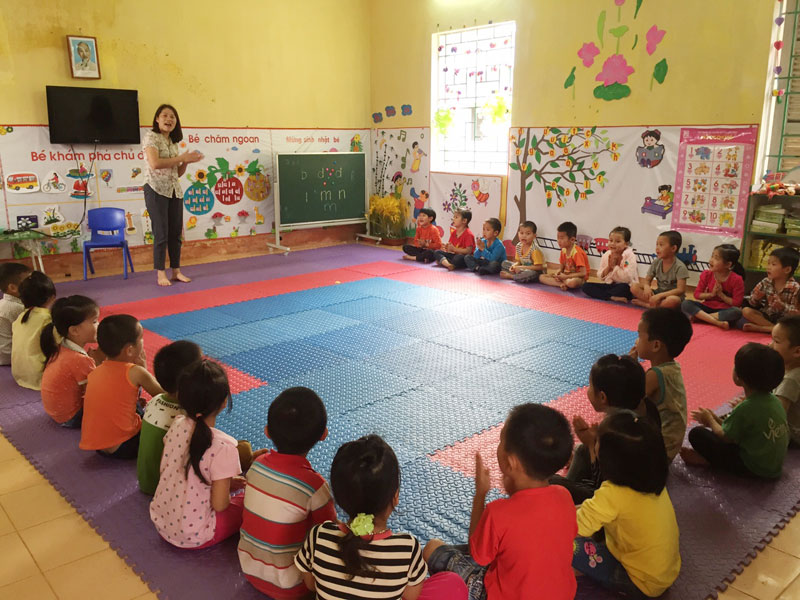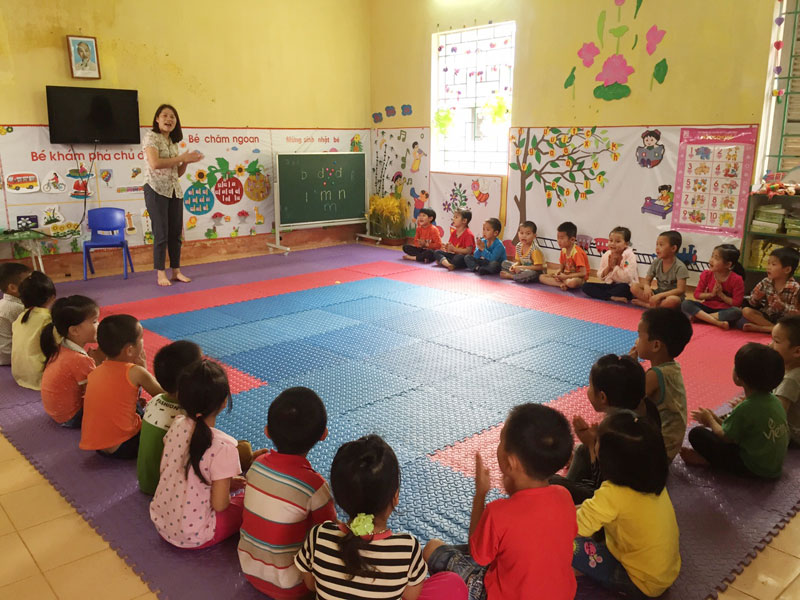



Trung Hoa Kindergarten (Tan Lac) has relatively high rates of underweight children aged 3-5 years (from 12 to 13.5%). Photo: Beautifully decorated classroom, teachers organize many collective activities to attract children to participate.
At Trung Hoa Kindergarten, the rate of malnourished children aged from 3 – 4 years old is 13.5%, this rate at Man Duc Kindergarten is 13.2%, etc.Meanwhile, at the same time of statistics, the rate of malnourished children in kindergartens in Tan Lac district is below 7%, this number of the province is under 5% and the rate of malnutrition children in kindergartens in Tan Lac district fluctuated from 6-7.5%, the whole province is under 6%.
Malnourished children are mainly at nursery schools, aged 3 - 4 years old and most are new to school. Newcomer children have not adapted the school environment; their mobility and eating habit are not good. The second reason is the care and nutrition in some families are not good, especially families with parents working far away.
Right after examining and identifying the data and realistic conditions, as well as the school reasons, on 16th January, 2018, the Tan Lac Education and Training Board issued an official Documentary No.15 on "Strengthening measures to reduce the rate of malnourished children at kindergartens”. At the same time, at the monthly principals' conferences, the problem of malnourished children has been taken into account in analyzing, discussing and agreeing on effective solutions. .
The Education and Training Board asked schools to check and review the weight and health records on the growth chart. From finding out the reasons why children are malnourished, they have to develop a detailed plan for recovering malnourished children, focus on the urgent things to do, such as promoting playground areas of physical development at schools, regularly doing exercises and training with a height-training tool, coordinate with Communal Healthcare Center staff to intervene or advise parents to take Vitamin A and dewormer tablets regularly; enhancing the child's outdoor enjoyment with the right amount of time to be exposed to the sun early in the morning. Schools take care of supplementing the children’s diets, changing menus regularly, and making them taste good. Teachers should pay more attention to malnourished children, have appropriate pedagogic solutions, and encourage children to eat at full capacity.
In addition, the schools are interested in propagating and coordinating with parents in building a diet to balance the nutrients, food diversity, rational in processing, meet nutritional needs, enhance the children's eating of high-growth foods at home, consult families to focus on children's supplements such as yogurt, soy milk and fruits such as bananas, papaya, grapefruit, oranges.
According to the child health data in March, the malnutrition children rates of some schools have fallen by 2-3% compared with the data of December 2017; when the close the school year is ending, the more likely they are to gain weight faster.